The Tupolev Saga
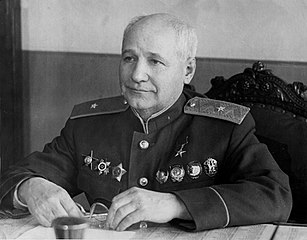 For that introductory matter into Soviet naval air power, it is important to stress the importance of Andrei Tupolev, not only for the development of bombers, to put in parrallel to Boeing, but in aviation in general. His models, taking the best innovations of its time, record-breaking when seen, proved extremely durable as well. Russia was no foreign to massive aviation, with the Ilya Murometz of genius designer Igor Sikorky, later immigrant to the US during the revolution and creator there of a most famous Helicopter lineage. And so several names will soon associate themselves with the birth of Soviet heavy aviation, like Sergei Ilyushin and Vladimir Myasishchev, like Andrei Tupolev from TsAGI.
For that introductory matter into Soviet naval air power, it is important to stress the importance of Andrei Tupolev, not only for the development of bombers, to put in parrallel to Boeing, but in aviation in general. His models, taking the best innovations of its time, record-breaking when seen, proved extremely durable as well. Russia was no foreign to massive aviation, with the Ilya Murometz of genius designer Igor Sikorky, later immigrant to the US during the revolution and creator there of a most famous Helicopter lineage. And so several names will soon associate themselves with the birth of Soviet heavy aviation, like Sergei Ilyushin and Vladimir Myasishchev, like Andrei Tupolev from TsAGI.
This story starts naturally with Andrei Nikolayevich Tupolev, born on 10 November 1888 in Pustomazovo, near Kimry (Tver Governorate in the Russian Empire). His father worked as a notary for the governorate so he was no illeterate and received a good education and had abilities, confirmed when he studied law at St. Petersburg University. Allegedly linked to Alexander II’s murder as an alleged revolutionary he was expelled and worked at Gymnasium in Tver 1908, then studied at the Imperial Moscow Technical School (IMTU) and Emperor Nicholas II Moscow State University of Railway Engineering, being accepted at both but only attending IMTU. Next year he specialized in aerodynamics under Nikolay Zhukovsky, volunteering at the Aeronautical workshop and by 1910 with his workshop friends her built and test piloted his first glider.
Her later created the first wind tunnel in Russian and started the first aerodynamic laboratory at IMTU. In 1911, he was accused of revolutionary activities and arrested but released on condition he returne to his family at Pustomazovo. In 1914 however Russia needed all the help from its engineers for its growing aviation and Andrei was back to IMTU in 1914. He continued in his field until 1917, and through the Russian Revolution, being graduated in 1918 as Engineer-Mechanic and presented his thesis on the development of seaplanes. By 1920 IMTU became the Moscow Higher Technical School (MVTU) and Andrei became a teacher, on basics of aerodynamic calculations.
A central figure in Russian Aeronautics, Tupolev became a leading fugure of the Central Aerohydrodynamic Institute (TsAGI) from 1929 until his death in 1972, including as director. In the 1930s-era his designs were based partially on all-metal aircraft design concepts pioneered by Hugo Junkers and by 1925, he designed the first modern Soviet twin-engine bomber: The TB-1, one of the most advanced designs of the time, that we are seeing here. Tupolev lso designed “monsters” like the 63-meter wingspan eight-engined Maksim Gorki, and the four-engine TB-3, still the bedrock of Soviet Bomber units in 1941. In 1937, 21 October he was arrested together with Vladimir Petlyakov and the entire directorate of the TsAGI by Stakin during the great purges. In 1939 he was moved from a prison to an NKVD sharashka to continue working under strict surveillance and released in July 1941 after making his unit the “Tupolevka” and designing the esxcellent TU-2.
Long story short, he will continue development of various models but really shone post-WW2 with a serie of large bombers, piston-powered and reactor-powered, including many used for naval patrol and reconnaissance and attack. His contribution to aviation worldwide until 1972 is just colossal, and he had state funerals.
The first moden Soviet Torpedo Floatplane
The TB-1P was a mere variant of a famous bomber, the TB-1, still flying in 1941. The story of this model started in 1924, when TsAGI, managed by Tupolev, started a prototype under the development name ANT-4, as a two-engine modern bomber aircraft. It used a technique aquired from Junkers 1918, the corrugated Duralumin skin to get rid of framing and still procure great rigidity. It was a very sturdy, angular monoplane which became the backbone of the Soviet bomber force for many years: Its first First flight was on 26 November 1925 and it was introducted to the VVS in 1929 (used also by Aeroflot) and produced until 1932, until 66 extra models of the last batch were kept for conversion as floatplane bombers. Its durability was amazing, and the TB-1 was still in numbers when the German invasion started in 1941, as the transport model G-1. In fact it was only retired in 1948. Its drivative was the R-1 reoconaissance model and of course the quad-engine TB-3. Of course the TB-1 became a landmark as the first large all-metal aircraft built in the Soviet Union.
Initial development
Back in December 1925, the main aviation bureau offered TsAGI to take over the construction of a “sea bomber”. This was to be a large flying boat. A first for TsAGI at this scale as it lacked a proper water pool to test models. It was risky to take on that one, and instead internally it was voted to ope for the safer way, installing floats on an existing, proven land aircraft, which brought many advantaged with it. Only calculations linked to the drag caused by the floats, and weight repartition, were to be a concern for modifications. On January 15, 1926, a letter was received from the OTB to make preliminary calculations for a float-based ANT-4 (factory name for the Tu-1). Delays however had the project falling under schedule. At the start of 1928, the UVVS required a conversion of the TU-1 on floats as soon as possible. Calculations were also reworked to integrate the installation of brand new BMW VI engines to compênsate for the drag and added weight of the floats. Their types was not specified so the team opted for the simple solution of having two main underwing floats, leaving free the belly section for payloads. In December data from TsAGI was senet to the UVVS for evaluation on paper.
In September 1929, the UVVS came back to TsAGI confirming the choice of a serial Tu-1 in marine version and this time precised the recommended type of floats. On October 11, TsAGI proposed the same type used by Junkers on their the Marine Ju-1 prototype, with some forward alteration. The institute refused new floats and by October 30, UVVS decided to order to Short in UK a new floats chassis. They were indeed urgently needed for a propaganda flight to America. These floats were manufactured at plant No. 22 and tested in Taganrog, mounted on a cradle in a basin. This was successful. Then, they were mounted in a specially modified plan, which crashed as the propeller blade collapsed. Quickly repaired this prototype became the propaganda plan “Country of the Soviets”, brightly colored, which successfully completed its intended trip overseas.
In the meantime, Short sold the the intended final floats pair, more suitable for the larger TU-1. They were slightly larger, with a fuller outline. In April 1931, a single modified TB-1 was transferred to Taganrog, and in three months the floats were assembled and first tests performed, with transfer on June 15, to the naval department of the Air Force Research Institute for official tests in Sevastopol, until the end of August. This model became the TB-1a in Soviet Ordnance (“a” standing from “aqua” in latin or “water”).
The additional floats and the drag they caused was a concern to find the right engine power. Maximum speed did not exceed 185 kph on the initial tests and ceiling was limited to a mere 3,620 m (). Maneuverability and rate of climb were also far inferior to the TB-1. However, given the overall package, it still carried the same heavy payload. It was thus considered satisfactory. Compared to the Junker YuG-1 and Val in naval squadrons, the TB-1a was better suite for anti-ship missions. This, the TB-1P was adopted by the Red Army Air Force.
Production in Taganrog
Mass production of floats was organized, with English measurements converted and drawings made. Factory No. 22 was first contacted, but already overloaded and so documentation and sample floats were transported to Taganrog to be manufactured as the “type Zh”, installed also on TB-1 arriving from Moscow’s main Tupolev plant.
A possible evolution: The TOM-1
Basically the “production” of the TB-1P was carried out after the cessation of production of the TB-1 back in Moskow, most arriving models being mothballed. A total of 66 underwent this conversion at Taganrog, being eventually called TB-1P and sometimes MTB-1. However to reach a greater production with a more perennial model, it was also necessary to study an evolution, the TOM-1. This aircraft in developement since August 1928 by design bureau (Plant 28) under guidance of the engineer P. Richard from France. It was close to the TB-1P, but larger, heavier and with a stressed smotth skin rather than the original corrugated surface, inherited from Junkers designs. The TOM-1 prototype was built and tested in December 1931, and although significantly superior, it was abandoned on the ground of technological complexity and high cost.
General conception
The TB-1P was essentualy a TB-1 with floats, used as a torpedo bomber. The original base was also the first Soviet all-metal heavy bomber, quite a milestone. Most of the work consisted in nailing the right type of floats until the Short type was eventualy adopted. Conversion was was transferred to Taganrog and it took three months to assemble and install the floats. Tests were validated by August 1931.
So the “design” of the TB-1P was essentially to find ways to combat extra weight and additional aerodynamic drag induced by the floats. Maximum speed at first was not impressive, as the ceiling, and climb rate deteriorated, but still, it had the required payload for its mission. The TB-1P inherited the same corrugated duralumin fuselage, which dispensed of framing but ion a limited parts, notably the wing-support chassis. Quite crude, the TB-1 had no enclosed cockpit, but a glassed undernose for the observer. The pilot and copilot at the front were in open air and had to shout to communicate. Defensive armament was good, with a nose and two dorsal turrets with twin flexible mounts and light Machine guns. Command used cables and the tail surfaces were compensated and balanced.
The “type Zh” floats were basically copied of the Short model. They were all-metal in duralumin, attached by “N” type struts under the wings, below the engine attachement points and with cross bars, close to the fuselage underside. They had hatches in order to store a flexible lift raft, and survival kits or rations, and had hooks to be towed. Two ladders allowed to communicate with them, on either side of the fuselaged, with the crew walking on the wings.
Engines
The Mikulin M-17 was a Soviet-licensed copy of the German BMW VI V-12 liquid-cooled aircraft piston engine. Alexander Mikulin improved the output and simplified it, to be used by Soviet aircraft and tanks up to World War II. Production started in 1930, up to 1942 with 27,000 produced, 19,000 being aircraft engines and the rest in the BT-7, T-28, T-35 and KV-1.
Type: 12-cylinder 60° Vee aircraft piston engine, bore 160mm (6.30 in)
Stroke: 190/199 mm (7.48/7.83 in) different between right and left cylinder bank due to articulated connecting rods.
Displacement: 46.9 L (2,864 cuin)
Length: 1,810mm (71.26 in)
Width: 859mm (33.82 in)
Height: 1,103mm (43.43 in)
Dry weight: 540-553 kg (1,190-1,219lb)
Fuel system: K-17 Carburetor
Cooling system: Liquid-cooled
Power output: 680–730 hp (510–540 kW) but 510 kW (680 hp) each on the TB-1 as it was the first generation.
Compression ratio: 6.0:1 or 7.3:1
Armament
It consisted of six Degtyaryov standard DP-27/DP-28, 7.62 mm light machine guns, the standard used by infantry at the time. They were all given drum-like 47 rounds cartridges boxes, with tracers. These were Gas-Operated with flapper locking, had a rate of fire of 550 rpm and muzzle velocity of 840 m/s (2,755 ft/s), but effective range was just 800 m (874.9 yd). To compensate, twin mounts were installed, but against modern fighers of the 1940s, they were hopeless.
The main reason these models were designed, were their offensive payload. It could be triple:
-BOMBS: Standard 250 kgs, or 50 kgs incendiary bombs up to 1000 kgs so four 250 kgs for example, in the enclosed bomb bay.
-Torpedoes: In 1931, the Soviet Naval Aviation were classed as TAN “Torpeda Aviatsionnaya Nizkaya” (Torpedo, Aircraft, Low Altitude), VVS-12 torpedo and 450 mm (17.7″) TAN-12 Powered by a Wet-heater and based on the 45-12 (456 mm Pattern 1912) torpedo.
Mines: Several types were used, but the MAV-1 was the most common. Each plane could only carry one of these, which was a moored underwater mine, self-deploying at a setting made before the flight.
Specifications TB-1P |
|
| Crew: | 6: Pilot, copilot, observer/bomber, 3 gunners |
| Dimensions: | 18.00 m, Width: 28.7 m, Height: 5.10 m |
| Weight: Light | Unladen 4,520 kg, Max. Combat: 6,810 kg |
| Propulsion: | 2× M-17 V-12 liquid-cooled engine | 680 hp |
| Performances: | Top speed: 178 kph Service ceiling: 4,830 m |
| Endurance: | 1000 km range |
| Armament – MGs | 6x 7.62mm DA MGs |
| Armament – Bombs | 1000 kgs, or a 18-in torpedo, or a mine |
Service
Early units
Since the TB-1 was originally designed for experiments with aircraft mines and torpedoes, it was quite logical to transfer some of these machines to naval aviation. The first mine-torpedo unit started before even May 1931, and the Air Force Research Institute proposed to create a “torpedo cell” as part of the 9th air brigade, Black Sea. One TB-1 was transferred from May 25. It validated the creation of a torpedo detachment commanded by the pilot Morozov, based in Kutch but equipped with land-based TB-1s equipped with a universal OTB belly carriage to suspend the VVS-15 high-altitude torpedo and VOMIZA-100 mines with similar parachute systems, using several domes to gradually damp the fall speed; They also used VVS-12 torpedoes from low altitude flight.
Tests of mines and torpedoes started in March 1932. By September, they started to use them on live targets like the old battleship “Pariskaya Kommuna”. In October fleet maneuvers saw TB-1s dropping torpedoes on a target 15 miles from the Chersonese lighthouse, missing due to the drift of parachutes with the wind. Until November 14, nine drops were completed. Next, the unit received its first TB-1P floatplanes, and by the end of September 1931, the 62nd Squadron (4th Aviation Brigade) had three YuG-1s, three TB-1Ps in the Baltic, testing the VVS-12 torpedo, entering service as the TAN-12, while a high altitude (parachute) one was called the VVS-15, later TAV-15 in service. The parachuted mine VOMIZA-100 became MAV-1 and modernized in 1933, lightened and simplified.
The same year, the TAV-12 became standard as an aerial torpedo, stronger than the TAV-15 as it could be dropped at 180 km/h, with higher speed and thrice the range. In 1934-1936 the TAN-12A was improved with a parachute system reduced to 120 kg and 45 s descent time, followed by the TAV-15A. Meanwhile were created the 121st Squadron in the Baltic and 124th Squadron in the Black Sea, 1st Squadron in the Pacific, which 12 TB-1/4Ps each according to registers. Each was divided into three flights of four planes, same type (eiher TB1 or TB-1P). By March 1932, the 51st squadron from Voronezh was transferred to Khabarovsk in the far east, joining the 1st Squadron. But torpedoes and mines were lacking.
Deployment and tactics
High-altitude torpedo drops were certified in the 1st squadron (Pacific) in the spring of 1933. At the time, these units were supposed to lay active defensive minefield directly in the path of incoming naval units. These dynamic barriers would appear unregistred in the most unexpected spots in a matter of hours. They were setup by groups of four planes in succession, in three waves. Distance for the drop were measured with a special rangefinder designed by A.E. Stolyarsky, aimed with the SP-123 sight while was promised a telemechanical (radio-controlled) system used by the lead aircraft (it was never adopted).
It was however sometimes difficult to find the correct spot based on map information, so it was though of dropping mines directly in the path of a moving ship, a dangerous task. It was later theorize it could force the ship to maneuver out oits path, crssing an attack of torpedo bombers or torpedo boats. This was taken seriously by the Air Force Research Institute and the tactic was tested in October 1933, held in the Baltic and directed by the head of the Red Army Air Force Ya.I. Alksnis. TB-1Ps of the 121st squadron used TAN-12 torpedoes and MAV-1 mines in a coordinated attack on a moving target, the old destroyer Karl Marx maskeraded as the Finnish battleship Vainemäinen. The strike also comprised masking smoke curtains S-62B and implicated R-5 light bombers to deal with AA with small bombs and strafing fire. A mine line was laid on her path, constrain its maneuver, allowing a flanking torpedo attack. But it failed:
The destroyer left the minefield ten minutes before the TB-1Ps appeared and it was too late while Mines were laid not on her course but to her left. Torpedo bombers attacked in two pairs, from the north and south under the cover of smoke screens and made an impression still. However the northern one appeared too late and too high. Still, the south group manage to hit the ship with a torpedo. On October 15, the exercize was repeated on the larger battleship “Marat”. The P-5 bombing was successful with one direct hit. This experience proved this “dynamic minelaying” was not realistic as a tactic, and this use of the MAV-1 was found inappropriate, although still promising.
Late Interwar service
It was recommended to continue combined operations with MAV-1 mines and TAN-12 equipped TB-1Ps, using smoke curtains to masking their manoeuvers. In June 1934 during the summer maneuvers of the Baltic Fleet 12 aircraft were used against Marat, attacking from different directions with TAEM 5 training torpedoes. Several hits were recorded, but iot was a high-altitude drop, not very successful overall. Meanwhile, Low altitude torpedoes were considered purely offensive, with aiming carried out using primitive rack-and-pinion sights for the lead plane. KP-2 sights were installed and later replaced by the PT-136 with an optical rangefinder and vector mechanism taking account of relative speeds. The Yeysk school by January 1935 had 26 TB1s for naval air bombing training.
On October 4, 1933, the Chief of Staff of the Air Force wanted to expand operations with ten squadrons (four with TB-1s) and by December eight squadrons were formed, almost a for the Far East, but this was never realized.
The TB-1P were actively used in the Baltic, but mostly as scouts-bombers. There were not enough mines and torpedoes for training. In winter, skis were installed, or wheels. In September 1934, the 122nd squadron took part in the lost submersible L-2 “Stalinets” in the Gulf of Finland. She was found and part of the crew, all the wounded were evacuated by the squadron commander A.M. Viraka.
In September 1, 1936, six squadrons of TB-1Ps operated in the Soviet mine and torpedo aviation unit, four TB-1s, two in the Baltic Fleet (121st and 122nd) plus one incomplete, the 34th in the Black Sea, and the 109th in the Pacific fleet. The latter was re-equipped with TB-3s. 12 aircraft were at the Yeisk flight school.
In the next two years, The 34th squadron in Evpatoria had its TB-1Ps replaced with the new R-5T. On January 1, 1938, still 38 TB-1 and TB-1P were active in several naval combat units. However it was ordered to retired them, to be sent to auxiliary units or scrapped. By September 25, 1940, there were still 14 TB-1s active, and just six were flyable, used for training purposes and transportation.
Gallery
Author’s illustrations: Types and liveries
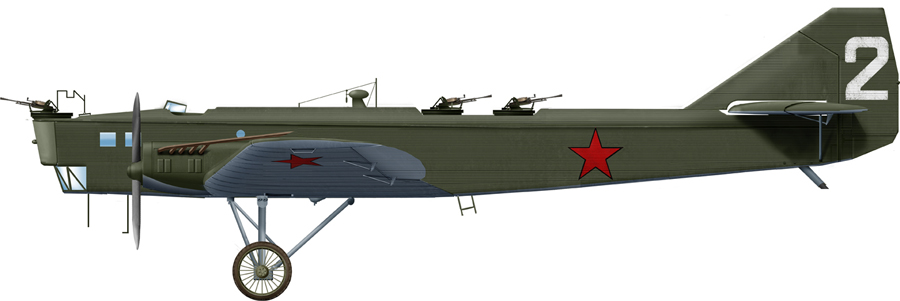
Basic Tupolev ANT-4 of a coastal bomber unit in 1934. It was replaced by the TB-2 rapidly.
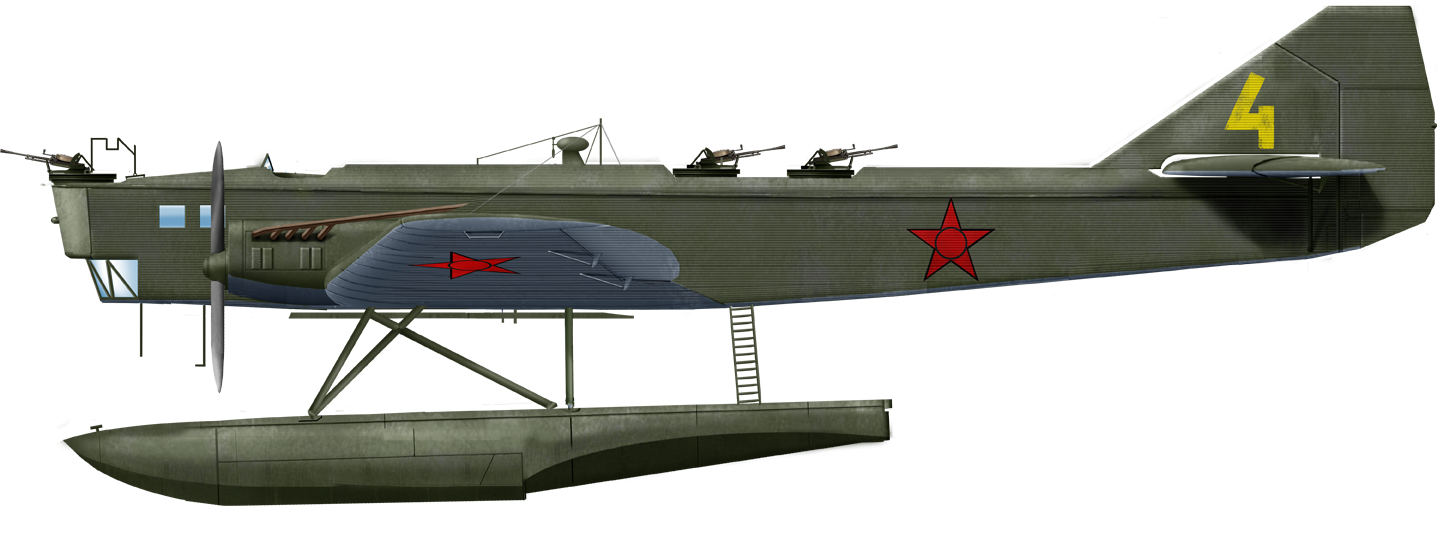
TB-1P in the Baltic Fleet, 1933. Most of these were used for reconnaissance until 1937.
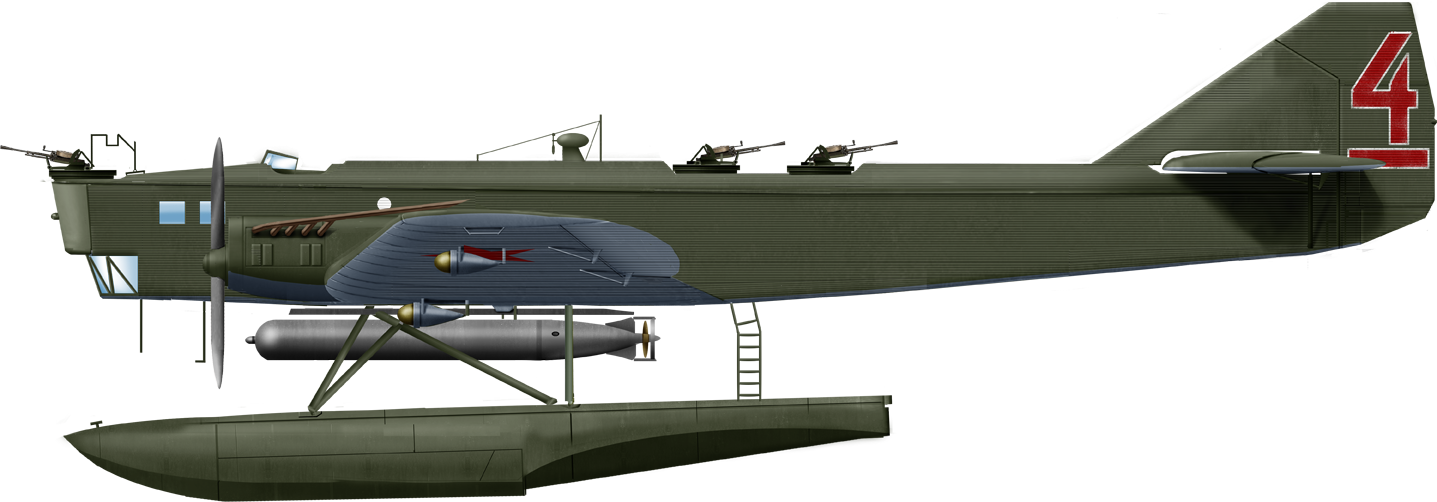
TB-1P carrying a single TAN-12 torpedo, 62nd air brigade, Baltic Fleet, Leningrad, Summer 1934.
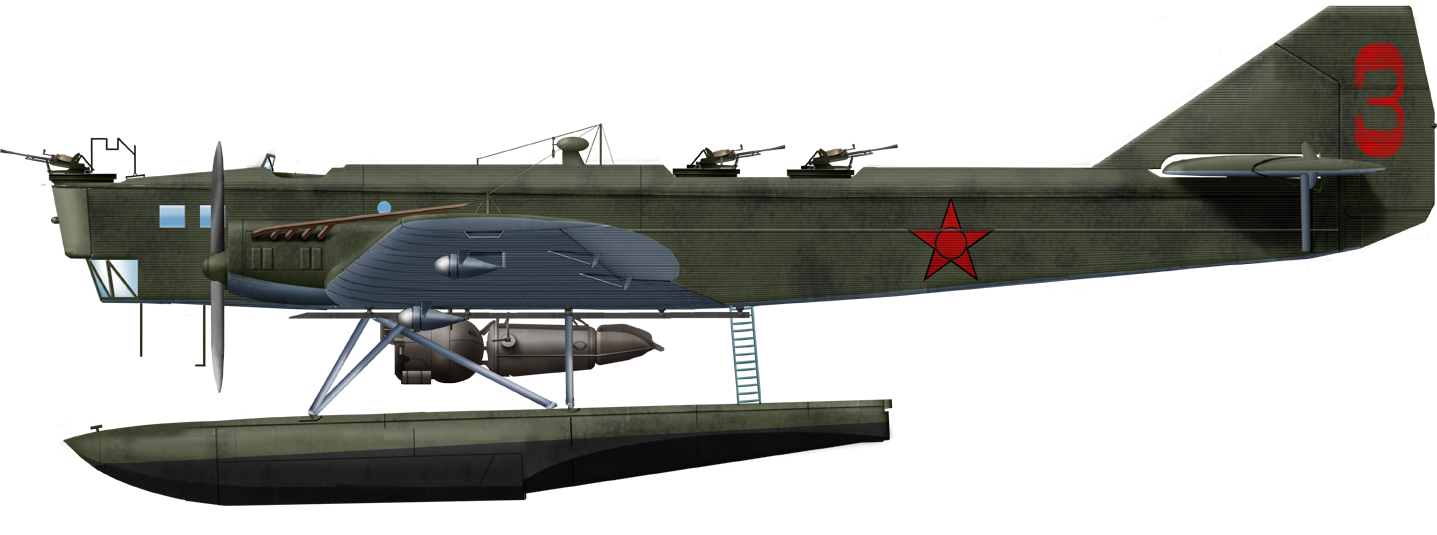
TB-1P carrying a MAV-1 mine
Additional photos
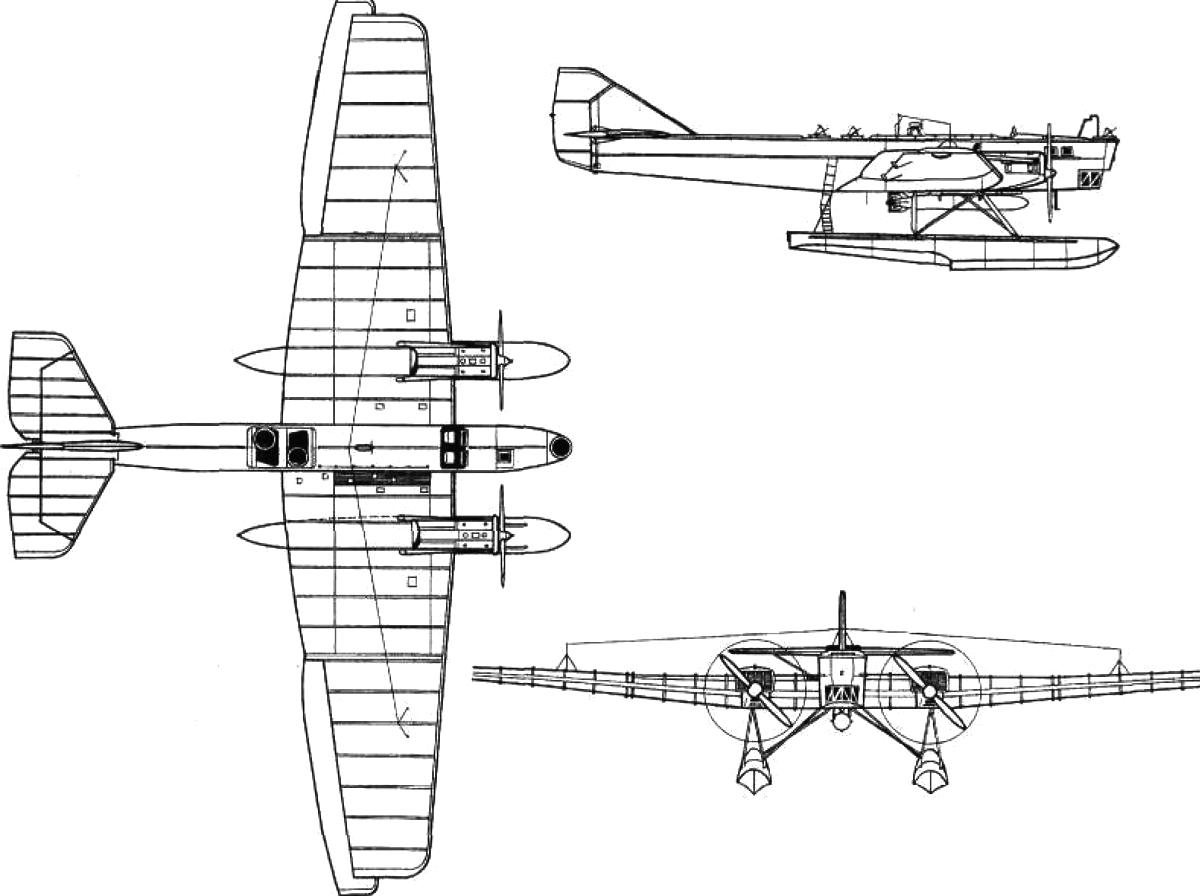
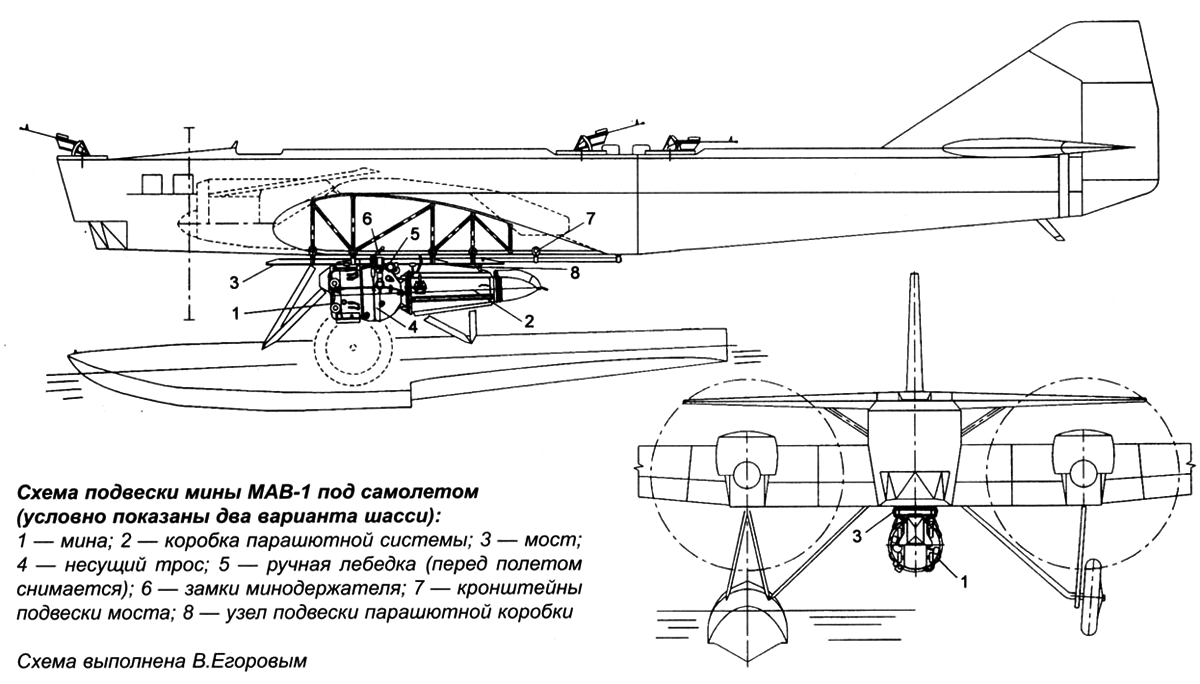
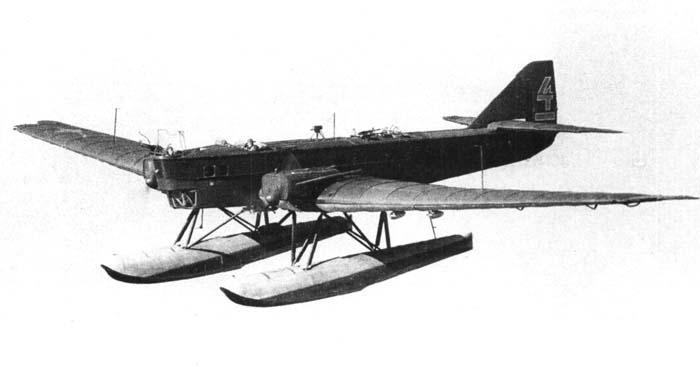
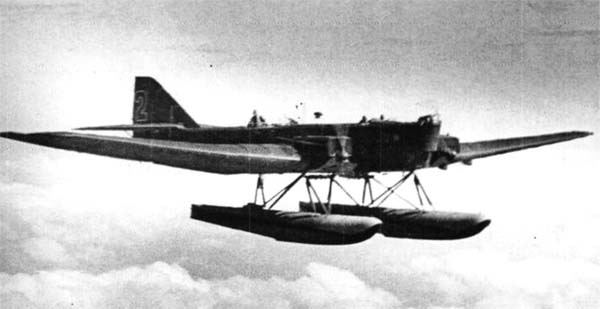
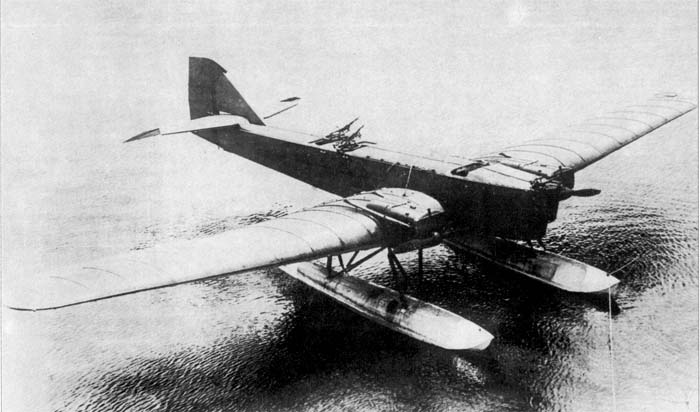

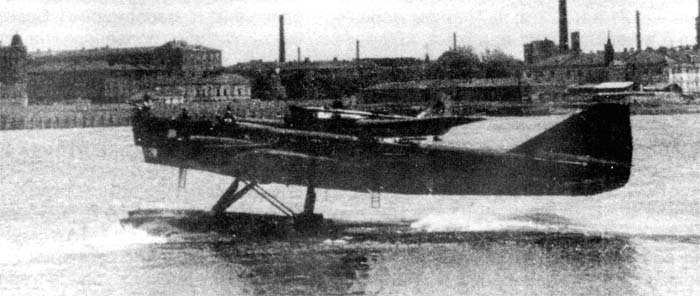
Resources
Aviation collection. V. Rigmant, V. Kotelnikov. Heavy bomber TB-1
Maximilian Saukke. Tupolev aircraft. ANT-1 – ANT-15
G.F. Petrov. Seaplanes and ekranoplanes of Russia 1910-1999
Shavrov V.B. History of aircraft designs in the USSR until 1938
Simakov B.L. Aircraft of the country of the Soviets. 1917-1970
Encyclopedia-reference book. Aircraft of the country of the Soviets
Vladimir Rigmat. Under the signs “ANT” and “TU”
SAE Int. Paul Duffy, Andrei Kandalov. Tupolev: The man and his aircraft
OAO “Tupolev” : From ANT-1 to Tu-334
Links
navweaps.com soviet interwar aerial torpedoes
On airwar.ru
On airpages.ru
Videos
Soviet torpedo bomber Tupolev TB-1P (1930s) Aviation videos archives part1 1900-1935
The Soviet Bomber That Was Utterly Bonkers | Tupolev TB-3 – Rex hangar
The model corner
On scalemates, Mikromir
kit review of the latter.



 Latest Facebook Entry -
Latest Facebook Entry -  X(Tweeter) Naval Encyclopedia's deck archive
X(Tweeter) Naval Encyclopedia's deck archive Instagram (@navalencyc)
Instagram (@navalencyc)





 French Navy
French Navy Royal Navy
Royal Navy Russian Navy
Russian Navy Armada Espanola
Armada Espanola Austrian Navy
Austrian Navy K.u.K. Kriegsmarine
K.u.K. Kriegsmarine Dansk Marine
Dansk Marine Nautiko Hellenon
Nautiko Hellenon Koninklije Marine 1870
Koninklije Marine 1870 Marinha do Brasil
Marinha do Brasil Osmanlı Donanması
Osmanlı Donanması Marina Do Peru
Marina Do Peru Marinha do Portugal
Marinha do Portugal Regia Marina 1870
Regia Marina 1870 Nihhon Kaigun 1870
Nihhon Kaigun 1870 Preußische Marine 1870
Preußische Marine 1870 Russkiy Flot 1870
Russkiy Flot 1870 Svenska marinen
Svenska marinen Søværnet
Søværnet Union Navy
Union Navy Confederate Navy
Confederate Navy Armada de Argentina
Armada de Argentina Imperial Chinese Navy
Imperial Chinese Navy Marinha do Portugal
Marinha do Portugal Mexico
Mexico Kaiserliche Marine
Kaiserliche Marine 1898 US Navy
1898 US Navy Sovietskiy Flot
Sovietskiy Flot Royal Canadian Navy
Royal Canadian Navy Royal Australian Navy
Royal Australian Navy RNZN Fleet
RNZN Fleet Chinese Navy 1937
Chinese Navy 1937 Kriegsmarine
Kriegsmarine Chilean Navy
Chilean Navy Danish Navy
Danish Navy Finnish Navy
Finnish Navy Hellenic Navy
Hellenic Navy Polish Navy
Polish Navy Romanian Navy
Romanian Navy Turkish Navy
Turkish Navy Royal Yugoslav Navy
Royal Yugoslav Navy Royal Thai Navy
Royal Thai Navy Minor Navies
Minor Navies Albania
Albania Austria
Austria Belgium
Belgium Columbia
Columbia Costa Rica
Costa Rica Cuba
Cuba Czechoslovakia
Czechoslovakia Dominican Republic
Dominican Republic Haiti
Haiti Hungary
Hungary Honduras
Honduras Estonia
Estonia Iceland
Iceland Eire
Eire Equador
Equador Iran
Iran Iraq
Iraq Latvia
Latvia Liberia
Liberia Lithuania
Lithuania Mandchukuo
Mandchukuo Morocco
Morocco Nicaragua
Nicaragua Persia
Persia San Salvador
San Salvador Sarawak
Sarawak Uruguay
Uruguay Venezuela
Venezuela Zanzibar
Zanzibar Warsaw Pact Navies
Warsaw Pact Navies Bulgaria
Bulgaria Hungary
Hungary

 Bundesmarine
Bundesmarine Dutch Navy
Dutch Navy Hellenic Navy
Hellenic Navy Marina Militare
Marina Militare Yugoslav Navy
Yugoslav Navy Chinese Navy
Chinese Navy Indian Navy
Indian Navy Indonesian Navy
Indonesian Navy JMSDF
JMSDF North Korean Navy
North Korean Navy Pakistani Navy
Pakistani Navy Philippines Navy
Philippines Navy ROKN
ROKN Rep. of Singapore Navy
Rep. of Singapore Navy Taiwanese Navy
Taiwanese Navy IDF Navy
IDF Navy Saudi Navy
Saudi Navy Royal New Zealand Navy
Royal New Zealand Navy Egyptian Navy
Egyptian Navy South African Navy
South African Navy






























 Ukrainian Navy
Ukrainian Navy dbodesign
dbodesign